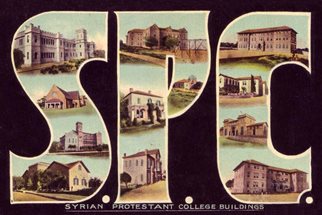Playing is Learning
The Architecture of the Early SPC Buildings
October 11th, 2016
| Ads | ||
|
Play the Challenge
|
||
|
A New Word is Coined A new Character is revealed A new Game is Afoot |
An Edutainment Adventure Based on Three Rounds of Investigations
|
|
|
Welcome to the World of PROFESsee™by seeCOSM™ PROFESsee™ is my title. I am the perpetual learner, in pursuit of knowledge, wisdom and truth. I derived my name from professor |
 |
|
|
With a self-proclaimed metaphorical title of “College on a hill”, perhaps, the tendency early on, was to lay so much emphasis on grandeur. This was very clear in the early architectural endeavors of the university. However, whether on purpose or by coincidence, the college’s somewhat authoritarian leanings also had a hand in the architecture of the early SPC buildings. It would be lengthy (considering I have just a few words) and somewhat boring to go into specific design details of each building. Rather, the emphasis would be on the what, and who influenced each design, and how the purpose behind each building dovetailed with this. Of particular interest is the period between 1870 and 1920 where the college grew from a few small buildings littering 20 acres of land to a college of over 20 buildings on almost 50 acres of land. It is also worth pointing out that two buildings mark the beginning and the end of this era: College Hall and West Hall. Both structures had a different perspective, and both spoke of the approach of the college’s then presidents. College hall extended the authoritarian approach – built to dominate and overshadow all other buildings – while West Hall expounded further on the leadership’s growing understanding of the need to embrace flexibility and get context from its diverse surroundings. One of the greatest influences on the architecture of the SPC buildings was Reverend Daniel Bliss’ Alma mater, Amherst College. Some of the early building were almost a carbon-copy of a version in Amherst College, most notably, the Ada Dodge Hall and the SPC Chapel or Assembly Hall. Ada Dodge Hall looks like the Morgan Hall in Amherst College, while Assembly Hall had almost all the features that Amherst’s Stearns church had, such as Gothic exterior, cruciform plan, and elaborate rose windows. Another of SPC’s buildings that had its roots in Amherst College was the Lee Observatory, perhaps not in design, but in ideology – an ideology of bridging the gap between religion and science. Other buildings of note during this era include the Main Gate Building and Post Hall. Much was the need to make the Main Gate Building grandiose, that the committee in charge decided to appoint a world-renowned architect, Edward Pearce Casey. Casey had built the Library of Congress and the Memorial Bridge across the Potomac River; another example showing the penchant for going big. Post Hall, on the other hand, had a more modest beginning. In fact, it was built by a professor of surgery at the university, George B. Post who coincidentally had an architect cousin, George E. Post. George E. Post also had his signature on some early SPC buildings. Can you Trace the distance between the early SPC buildings? Image courtesy of: http://www.alamy.com/stock-photo/spc.html |
||
Latest News / Events
E-mail [email protected]
The Professee™ Newsletter Beta
http://www.seecosm.com/
http://www.seecosm.com/

